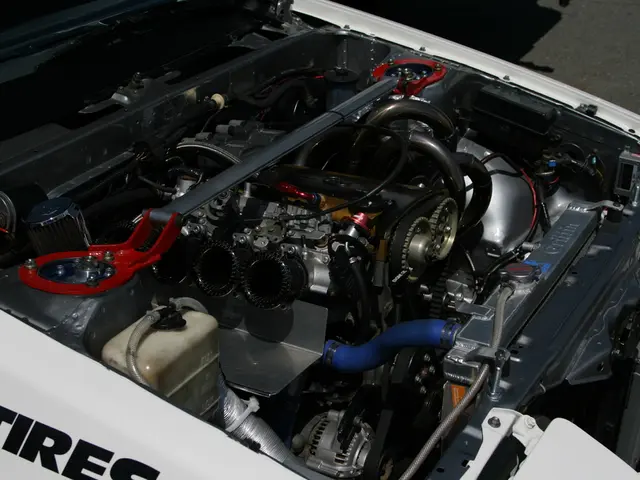Finzly reveals plans for a stablecoin and tokenized deposit strategy on its API-centric, multi-payment network platform
In today's rapidly evolving financial landscape, banks are increasingly adopting stablecoin and tokenized deposit systems to enhance their services and stay competitive. Finzly's innovative infrastructure empowers banks to adopt these new rails on their own terms, giving them control over policy, compliance, and business logic.
Key Benefits of Stablecoins and Tokenized Deposits for Banks
The implementation of stablecoin and tokenized deposit systems offers several significant advantages for banks:
- Faster Transaction Settlements: Stablecoins enable near-instant payment settlements, reducing wait times compared to traditional banking systems. This is particularly beneficial for cross-border transactions and small business lending, where speed can significantly improve cash flow and operational efficiency.
- Lower Transaction Costs: By using blockchain technology, stablecoins can significantly reduce transaction fees, often by more than 50% compared to traditional international transfers. This cost efficiency is crucial for both banks and their customers, especially for frequent transactions such as payroll.
- Enhanced Security and Fraud Resistance: Stablecoins are built on blockchain technology, providing a decentralized, transparent, and secure system. This architecture is more resistant to fraud and cyber attacks compared to traditional centralized systems.
- Increased Financial Inclusion: Stablecoins can reach unbanked populations by providing access to financial services through digital means, requiring only an internet connection and a digital wallet.
- Programmability and Automation: Stablecoins can be used to create programmable smart contracts, enabling automated financial services and unlocking new revenue streams for banks.
Use Cases for Stablecoin and Tokenized Deposit Systems
The potential use cases for stablecoins and tokenized deposits are vast:
- Cross-Border Payments: Stablecoins excel in facilitating fast, low-cost, and transparent cross-border transactions, overcoming the limitations of traditional payment systems.
- Small Business Lending: The speed and efficiency of stablecoins can improve the disbursement and repayment of small business loans, particularly useful for borrowers with limited access to traditional banking services.
- Global Payroll: Stablecoins can revolutionize payroll management for remote teams by speeding up payments, reducing transaction costs, and providing price stability.
- Digital Asset Management: Banks can leverage stablecoins to position themselves at the forefront of financial innovation, offering new digital banking services and tapping into growing customer demand for digital assets.
- Liquidity Management and Investment Returns: Stablecoins can be used to arbitrage investment returns and generate fees, providing a new financial instrument for managing liquidity and capital.
Regulatory Frameworks
The adoption of stablecoins is supported by emerging regulatory frameworks. For example, the GENIUS Act in the U.S. provides clear rules for stablecoin issuance and oversight, while Europe's MiCA regulation offers a comparative model for stablecoin governance. These frameworks help banks navigate the integration of stablecoins into their operations more confidently.
According to McKinsey & Company, the stablecoin circulation has doubled to $250 billion from $120 billion over the past 18 months, and forecasts suggest stablecoin circulation could reach $400 billion by year-end and $2 trillion by 2028. The US Treasury reported that stablecoins were involved in 50% of cross-border digital transactions in 2024.
The Finzly platform, for instance, makes it easy to integrate with ecosystem partners from custodians to blockchain networks, providing a secure, compliant path to stablecoin adoption. The platform offers virtual accounts that function as wallet-like constructs, allowing banks and fintechs to manage balances tied to stablecoin activity. It is designed to support conversion between fiat and digital currency pairs, such as USD to USDC, and stablecoins are now accepted in over 70 countries and facilitate cross-border payments and remittances.
In summary, the adoption of stablecoins and tokenized deposits presents a significant opportunity for banks to improve their services, reduce costs, enhance security, and tap into new revenue streams. With supportive regulatory frameworks and innovative platforms like Finzly, banks can confidently embrace this financial innovation and stay competitive in the digital age.
Read also:
- Tesla is reportedly staying away from the solid-state battery trend, as suggested by indications from CATL and Panasonic.
- Review of the 2025 Lamborghini Revuelto: Blazing Beasts on Wheels
- Tech giant Apple debuts sports app integrating betting odds provided by DraftKings
- California links 100,000 home storage batteries through its Virtual Power Plant program.






